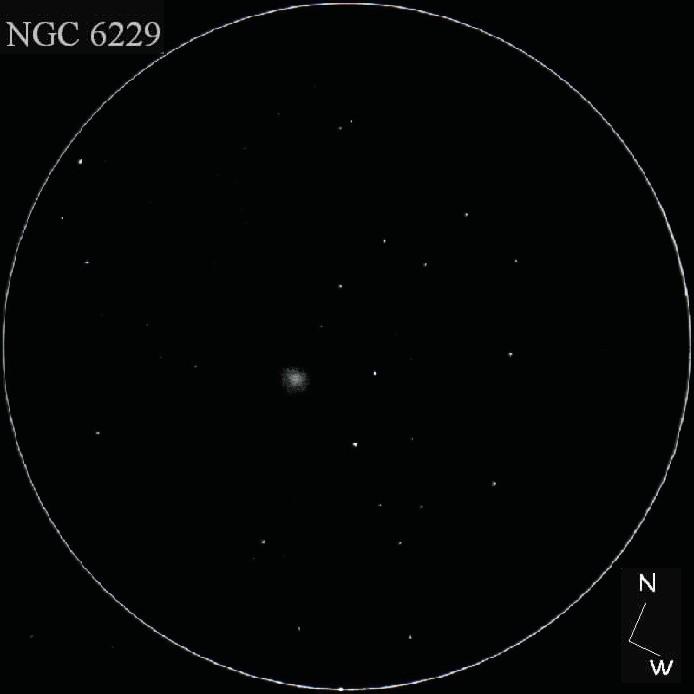Large globular clusters are always rewarding targets to hunt down from less than
ideal sky locations. In a 10” telescope from urban/suburban locations only the 9th
magnitude glow of this globular is clearly visible. Upon closer inspection the
core can be seen to brighten significantly. The angular size of this cluster looks
to be about 1.5 minutes of arc in the eyepiece. It is easy to see why 18th and
19th century observers thought this globular to be a planetary and on at least one
occasion it was reported to be a comet. At almost 100,000 light years distant, it
is challenging to resolve stars in this globular without at least 13 inches of
aperture. I could not resolve any stars of the cluster with the 10” scope. The
brightest stars in this globular cluster are about magnitude 15.5. Adding to the
eyepiece view are two well spaced 8th magnitude stars to the west listed in the
Henry Draper catalog as HD151689 and HD 151651.
Sketching Date and Time: 8-12-2007, 2:30-2:50 UT
Telescope 10” f / 5.7 Dobsonian 21mm eyepiece 69x
8”x12” white sketching paper, B and 4B graphite pencils, a blending stump, scanned
and inverted
Seeing: Pickering 7/10
Transparency: average 2.5/5
NELM 4.1
Frank McCabe


Frank,
Great report and sketch of a globular cluster on the other side of the galaxy!
Jason
Jason,
Thank you.It is always a treat to look at a globular cluster and then try and capture it.
Frank
Dear Frank,
Could you give me a personal mail to chippingdale.observatory@btinternet.com please I’m hoping you might be able to help me with a question?
Warm regards, Dale